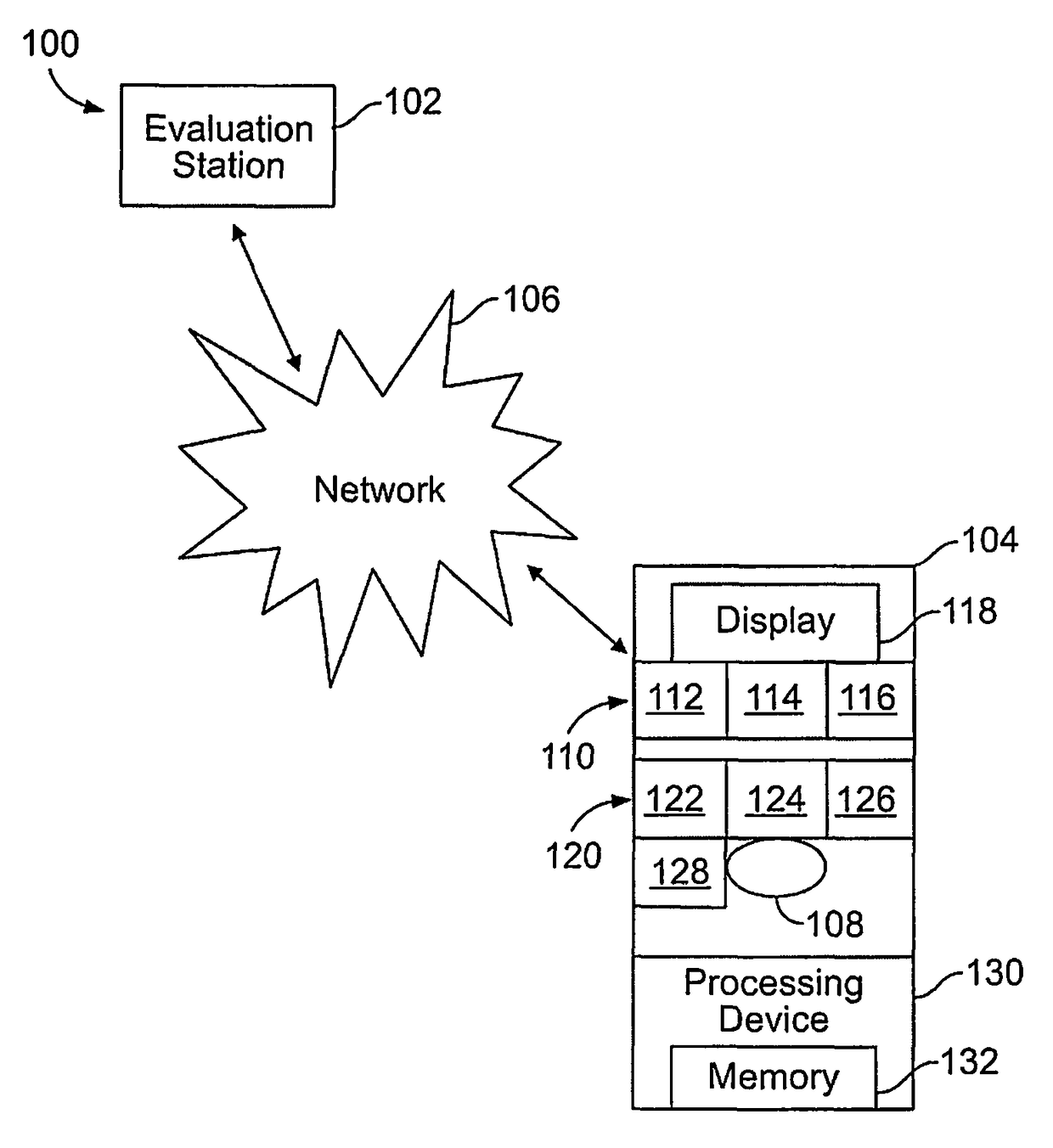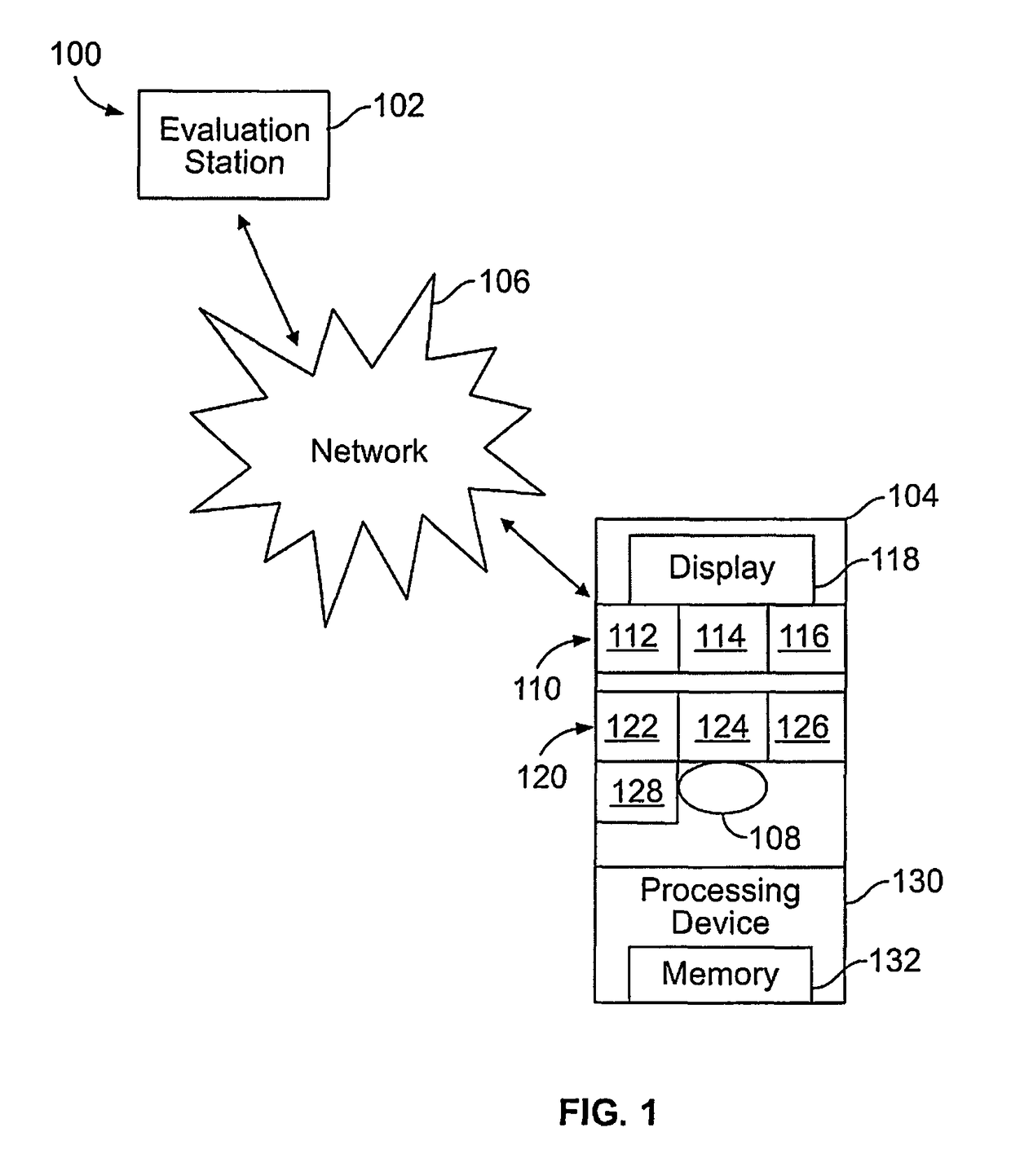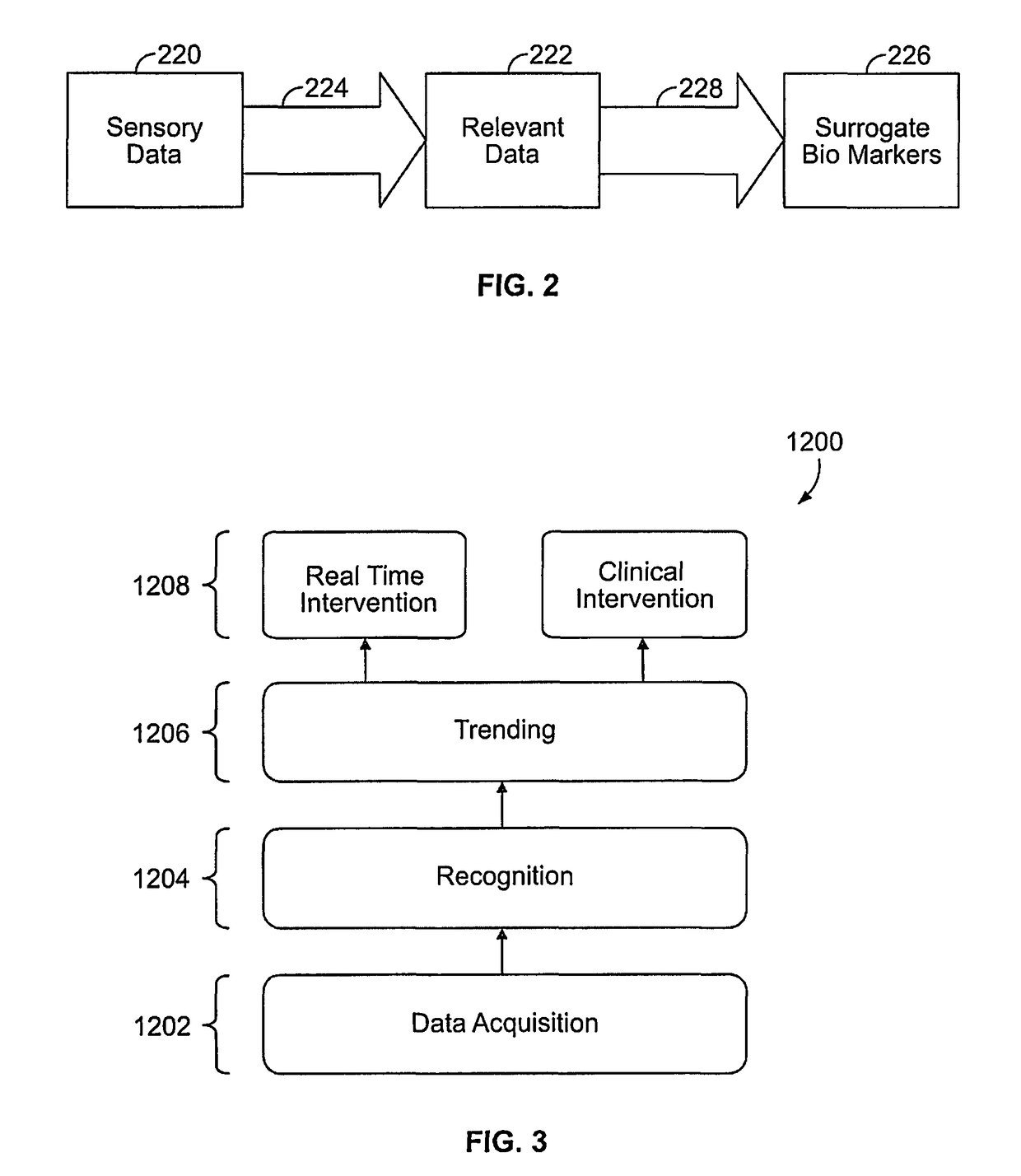Medical evaluation system and method using sensors in mobile devices
a technology of medical evaluation system and mobile device, which is applied in the direction of instruments, applications, person identification, etc., can solve the problems of prohibitively expensive and/or large cost and/or size of medical data equipment used by the physician when the patient is in the clinical environment, and achieves reasonable cost and/or size, improve patient outcomes, and reduce patient care costs
- Summary
- Abstract
- Description
- Claims
- Application Information
AI Technical Summary
Benefits of technology
Problems solved by technology
Method used
Image
Examples
Embodiment Construction
[0050]In accordance with one or more embodiments described herein, a medical evaluation system and method are provided. A mobile device that is carried by a patient acquires sensory data. The sensory data represents movements of the patient. The sensory data is examined and / or analyzed to extract medically relevant data from the sensory data. For example, the sensory data may be analyzed using computer-implemented machine learning algorithms that extract relevant data from the sensory data. The relevant data can include measurements of an amount of movement of the patient. For example, the relevant data can include measurements of a magnitude, frequency, and / or duration of tremors of the patient. The relevant data can be analyzed by computer-implemented machine learning algorithms and / or computer-implemented pattern detection algorithms to derive surrogate biomarkers from the relevant data.
[0051]Surrogate biomarkers represent clinically relevant information that is of interest to a ...
PUM
 Login to View More
Login to View More Abstract
Description
Claims
Application Information
 Login to View More
Login to View More - R&D
- Intellectual Property
- Life Sciences
- Materials
- Tech Scout
- Unparalleled Data Quality
- Higher Quality Content
- 60% Fewer Hallucinations
Browse by: Latest US Patents, China's latest patents, Technical Efficacy Thesaurus, Application Domain, Technology Topic, Popular Technical Reports.
© 2025 PatSnap. All rights reserved.Legal|Privacy policy|Modern Slavery Act Transparency Statement|Sitemap|About US| Contact US: help@patsnap.com



